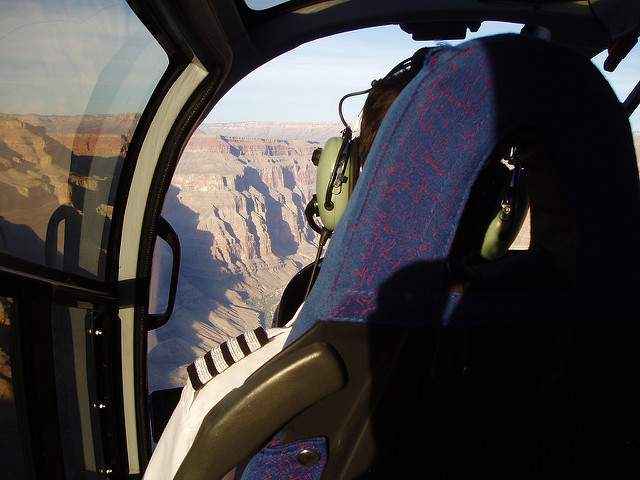Travel
Ruling overturns FAA rerouting of Phoenix flight paths

FILE PHOTO/ The FAA has made similar changes in flight paths at other airports around the country in recent years under a mandate by Congress to modernize the nation’s air traffic—control system. (Photo: Simon Allardice/ Flickr)
PHOENIX — The city of Phoenix and residents of historic neighbourhoods on Tuesday cheered a court ruling to force the Federal Aviation Administration to abandon its decision three years ago to set new flight paths for one of the busiest airports in the United States.
A three—judge panel of the U.S. Court of Appeals for the District of Columbia Circuit earlier in the day agreed that the FAA’s decision in 2014 to change the routes in and out of Sky Harbor International Airport in Phoenix was “arbitrary and capricious.”
The agency had implemented the new flight paths in September 2014 as part of an effort to streamline aircraft routing for safety and fuel efficiency for flights to and from Phoenix Sky Harbor International Airport, which sees about 1,200 aircraft and more than 120,000 passengers arrive at and depart each day.
The FAA has made similar changes in flight paths at other airports around the country in recent years under a mandate by Congress to modernize the nation’s air traffic—control system.
In Phoenix, residents and the city complained that the FAA did not consult sufficiently beforehand with senior city officials, elected officials or residents of the affected communities.
“By keeping the public in the dark, the agency made it impossible for the public to submit views on the project’s potential effects _ views that the FAA is required to consider,” the court ruled.
It was not immediately clear what the agency’s next move would be.
The FAA issued a statement saying only, “We will carefully review the decision before deciding on our next steps.”
The news was welcomed by neighbourhood residents and city officials. Phoenix’s historic community associations say several thousand homeowners were affected by the rerouting of the flights and collectively filed their own legal challenge of the FAA decision, in addition to a challenge the city filed.
“We are thrilled that the court saw the errors the FAA made, and agrees that the process was faulty and needs to be done right,” said Steve Dreiseszun, a longtime homeowner in Phoenix’s F.
Q. Story Historic District who helped lead the charge against the FAA decision.
“Overnight, we woke up to aircraft flying over our neighbourhood all the time,” he said. “We had never had that before. Since then, thousands and thousands of planes have flown over our homes.”
Dreiseszun said everyday life changed significantly in the affected neighbourhoods, where people shut themselves inside their air—conditioned homes when summer temperatures soar into the triple digits. “We could no longer go outdoors when the weather was beautiful or sleep with the windows open when the temperatures finally dropped,” he said.
Simon Wheaton—Smith, who lives in Phoenix’s historic Palmcroft neighbourhood, noted that “a major battle has been won, but that doesn’t mean the war has been won.”
The one—time airline pilot and former FAA operations inspector said he expected the agency would fight the decision.
Having the commercial jets flying over his home has been “highly distracting, even with my lawn mower going,” said Wheaton—Smith. “In essence, when one is outside it is very difficult to get any peace and tranquility. “
Phoenix Mayor Greg Stanton said in a statement that it was “just wrong” of the FAA to take a step “that negatively impacted the lives of thousands of Phoenix residents without seeking meaningful input from our community or the city. Today’s decision affirms that the FAA needs to go back to the drawing board and do this right.”
Phoenix Vice Mayor Laura Pastor called the ruling “great news for the impacted neighbourhoods who have been fighting these changes for the past three years.”
After the FAA implemented the new flight paths three years ago, over the following two weeks “the airport received more noise complaints than it had received in all of the previous year,” the ruling read.
It quoted local news reports at the time that said the flights rattled the doors and windows in their homes and that they had trouble sleeping, sometimes even wearing earmuffs to mute the noise when they were indoors.





















